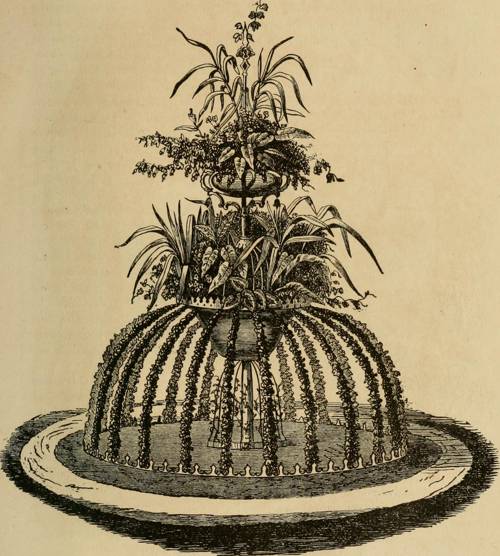
FAQ About Creating Indoor Plant Edges and Boundaries

How can I use indoor plants to define spaces in my home?
Indoor plants can be strategically placed to demarcate different areas within an open-plan home. Tall plants, such as fiddle leaf figs or snake plants, can create visual barriers between spaces like the living room and dining area. Smaller plants on shelving units or plant stands can also be used to signify space transitions subtly. Additionally, arranging plants in a line along a walkway can guide movement and define pathways.

What types of indoor plants are best for creating boundaries?
Tall and structured plants like bamboo palms, rubber trees, or large ferns are excellent choices for creating boundaries. These plants can grow tall enough to visually separate areas within a room. Plants that spread wide, such as monstera or peace lilies, are also good for defining edges through volume and foliage.

Can indoor plants be used as functional room dividers?
Yes, indoor plants can serve as functional room dividers. Large planters or pots with taller plants can be used to split a room while maintaining an open and airy feel. Additionally, plant shelving units filled with various flora can act as semi-transparent walls that provide a sense of segregation without completely closing off spaces.

How should I arrange plants to make an aesthetic edge in a room?
To create an aesthetic edge with plants, consider using symmetrical arrangements of potted plants along a wall or in corners. Mixing plant heights and textures adds visual interest, and using plant stands of different heights can enhance the effect. It's also important to consider the colors and shapes of the plants and pots to ensure a cohesive look.

What are some tips for maintaining plants used as boundaries indoors?
Maintenance involves regular watering according to each plant's needs, proper lighting, and occasional pruning to keep growth manageable and aesthetically pleasing. Ensure plants are not overcrowded as this could lead to competition for resources. Consider the use of rolling plant stands for larger pots to facilitate easy movement and cleaning.

Do indoor plant boundaries impact indoor air quality?
Yes, indoor plants can positively impact air quality by filtering toxins, releasing oxygen, and increasing humidity levels. Plants such as peace lilies, snake plants, and pothos are known for their air-purifying abilities, making them great choices for indoor environments where air quality improvement is desired.

What lighting conditions are best for plants used as indoor edges?
The lighting conditions required depend on the plant species. Generally, it's essential to match the plant's light needs to the location to ensure healthy growth. Low-light plants like pothos and snake plants can thrive away from direct sunlight, whereas plants like succulents and rubber trees need brighter conditions.

How do indoor plant boundaries influence home aesthetics?
Indoor plant boundaries add a natural element that can significantly enhance home aesthetics. They introduce greenery, adding color and life to drab areas. Plants also offer a soft contrast to the usually hard lines of furniture and architecture, making spaces feel more inviting and balanced.

Can plant containers impact the visual effectiveness of plant boundaries?
Absolutely. The choice of plant containers can greatly affect the overall look. Using uniform pots can create a cohesive appearance, while varied pots might add eclectic charm. Material, color, and texture of the pots should complement or enhance the plant and align with the room’s decor.

How do I choose plants that fit the scale of my space?
Consider the height and width of the mature plant, as well as the size of the available space. Large, open areas can accommodate bigger plants like rubber trees, whereas small, confined spaces are better suited for compact varieties like succulents or prayer plants. Matching plant size with space prevents overcrowding and creates harmonious aesthetics.

What are some ways to integrate indoor plant borders with existing decor?
Plants can complement existing decor by matching or contrasting with color schemes and materials. Consider the plant's foliage color and pattern, as well as the texture of both the plant and container. Strategic placement can highlight architectural features or draw attention to certain areas.

Should plant boundaries align with furniture arrangements?
Aligning plant boundaries with furniture arrangements can create a sense of order and continuity, enhancing both functionality and aesthetics. Placing plants behind sofas or alongside tables can soften edges and add interest without cluttering the space.

What is the effect of indoor plant edges on room acoustics?
Plants can help improve room acoustics by absorbing sound, which reduces echoes and noise levels. The leaves, stems, and soil in plant pots can disrupt sound waves, making plant boundaries beneficial in areas where sound attenuation is desired.

How frequently should indoor plants be rotated when used as borders?
Indoor plants should generally be rotated every couple of weeks to ensure all sides receive equal light exposure, especially if they are near windows or light sources. Consistent rotation promotes even growth and keeps plants looking their best.

Can hanging plants be used to create edges indoors?
Yes, hanging plants can effectively create indoor edges, particularly in spaces where floor space is limited. Hanging planters can define areas from above, such as over dining tables or seating areas. Popular options include trailing vines like pothos or spider plants.

What type of maintenance do hanging plants require?
Hanging plants require similar care to potted plants, including appropriate light and water, but may need more attention regarding humidity since air can be drier near ceilings. Ensuring the hangers or supports are secure can prevent accidents, and occasional pruning may be necessary to maintain shape.

Is it possible to create movable plant barriers indoors?
Yes, movable plant barriers can be created using wheeled planters or using a series of plants in small, individual pots that can be easily rearranged. This flexibility allows for dynamic space management and design adaptations as needed.

How can I use plants to create privacy indoors?
Plants can create privacy by acting as natural screens around areas such as reading nooks or home offices. Tall, dense plants like ficus or bamboo can block sight lines while maintaining light and airy environments. Arranging several smaller plants collectively can also create visual privacy.

What are some creative ways to use plants to define pathways indoors?
To define pathways, line either side with low potted plants like succulents for a subtle guide or use larger plants in striking planters to create a more pronounced boundary. Staggering plant heights along a path can add visual interest and flow to the space.

Can scented plants be used as boundaries indoors?
Scented plants like lavender or jasmine can add aromatic qualities to spaces, enhancing the sensory experience. These plants contribute an olfactory dimension, which can be delightful in areas where relaxation and ambiance are prioritized. However, it's important to choose scents that are not overpowering.
